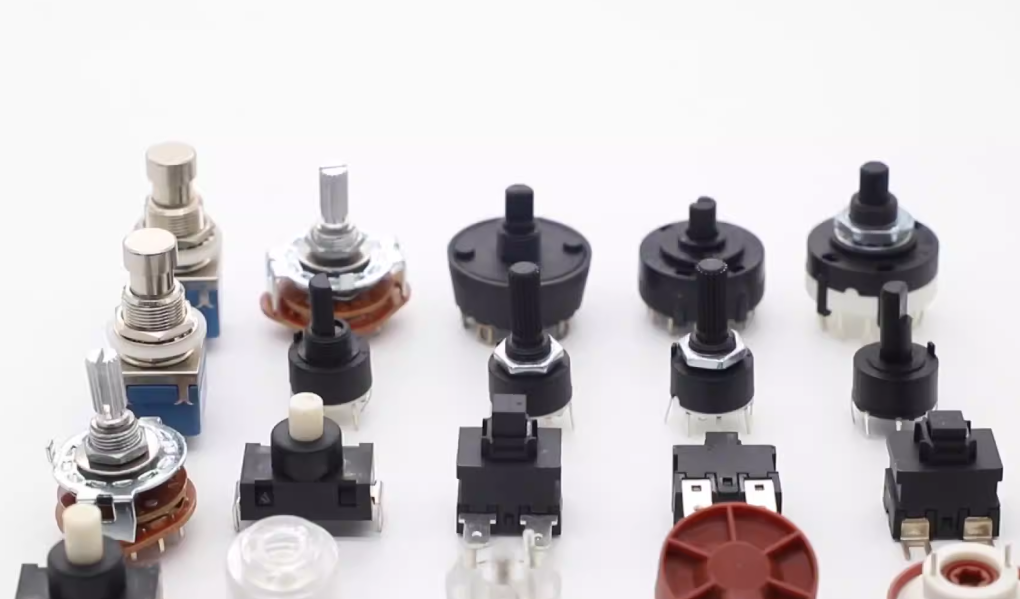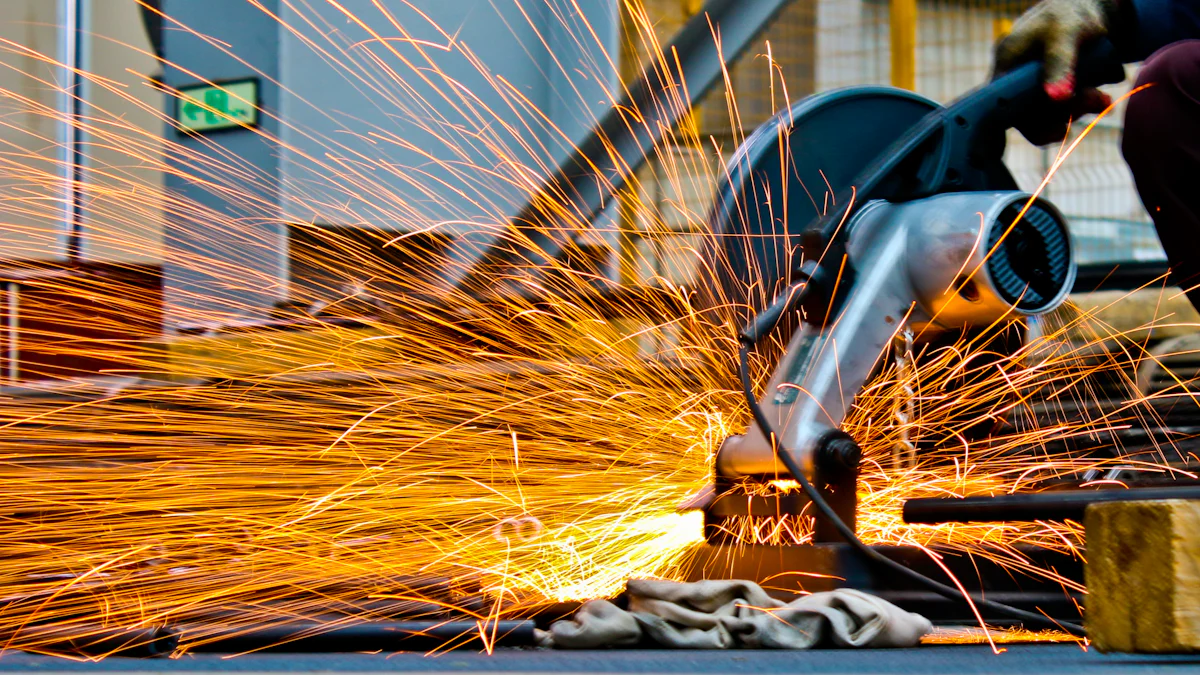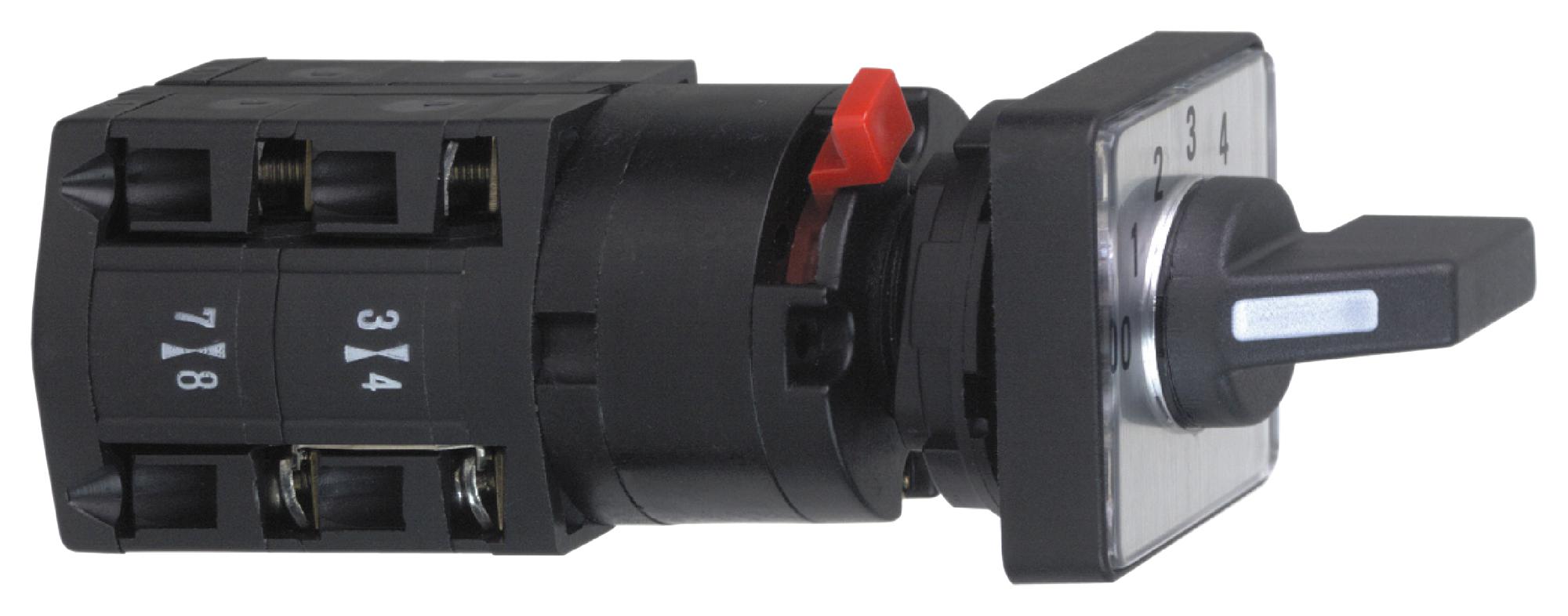
Choosing the right rotary switch can make or break your industrial setup. I’ve seen how a reliable multi-position selector rotary switch can simplify operations and boost efficiency. Whether it’s a Soken 3 Speed Fan Foot Massager Rotary Encoder Switch T85 or a Soken Bremas 8 Position Rope Chain Heater Rotary Switch 16A, durability matters. A 5 Position Rotary Switch with 16A 250V (RT243-2) offers versatility that fits many applications. Let’s dive into why these switches are game-changers.
Key Takeaways
- Pick rotary switches based on how many positions you need. More positions give better control for harder tasks.
- Focus on strong and reliable switches. Good materials work well in tough industrial places.
- Make sure the switch fits your needs. Think about voltage, current, and environment to prevent problems later.
What to Look for in a Rotary Switch for Industrial Applications
Key Features to Consider
When I’m choosing a rotary switch, I always start by looking at the key features. First, I check the number of positions the switch offers. Some applications need just two or three positions, while others might require up to 12. Next, I think about the current and voltage ratings. A switch that can handle high loads is essential for heavy-duty equipment. I also look for clear labeling on the switch positions. It makes operation easier and reduces mistakes. Finally, I consider the mounting style. Panel-mounted switches are common, but some setups might need a different type.
Common Industrial Applications
Rotary switches are everywhere in industrial settings. I’ve seen them used in motor control systems, where they help operators select different speeds or modes. They’re also common in testing equipment, allowing users to switch between circuits. In manufacturing, rotary switches often control conveyor belts or assembly lines. Even in power distribution, these switches play a role by isolating circuits or redirecting power. Their versatility makes them a go-to choice for many industries.
Importance of Durability and Reliability
Durability is non-negotiable for me when it comes to rotary switches. Industrial environments can be harsh, with dust, moisture, and vibrations. A good switch should withstand all of that. Reliability is just as important. If a switch fails, it can halt operations and cost time and money. That’s why I always look for switches made from high-quality materials, with a proven track record of performance.
Top Rotary Switches for Industrial Use in 2025

Switch 1: Schneider Electric Rotary Cam Switch
The Schneider Electric Rotary Cam Switch is a solid choice for heavy-duty applications. I’ve used this switch in motor control systems, and it’s never let me down. It’s designed for high performance and can handle demanding environments with ease.
Key Features
- Rated for up to 25A and 690V.
- Compact design for easy installation.
- Clear position markings for quick operation.
- Built with durable materials to resist wear and tear.
Pros and Cons
Pros:
- Excellent durability.
- Smooth operation with precise switching.
- Versatile for various industrial uses.
Cons:
- Slightly higher price point.
- Limited customization options.
Switch 2: Siemens 3LD Series Rotary Switch
The Siemens 3LD Series Rotary Switch is another favorite of mine. It’s reliable and works well in both control and isolation applications. I’ve seen it perform flawlessly in harsh conditions.
Key Features
- Rated for up to 32A and 690V.
- Modular design for flexibility.
- IP65-rated for dust and water resistance.
- Ergonomic handle for easy use.
Pros and Cons
Pros:
- High resistance to environmental factors.
- Easy to install and maintain.
- Great for outdoor applications.
Cons:
- Bulkier compared to other models.
- May require additional accessories for specific setups.
Switch 3: ABB OT Series Rotary Switch
The ABB OT Series Rotary Switch stands out for its reliability. I’ve used it in power distribution systems, and it’s built to last. It’s a great option for isolating circuits safely.
Key Features
- Rated for up to 40A and 690V.
- Compact and lightweight design.
- Lockable handle for added safety.
- High thermal resistance for extreme conditions.
Pros and Cons
Pros:
- Exceptional safety features.
- Compact size saves space.
- Handles high loads effectively.
Cons:
- Limited availability in some regions.
- Slightly complex installation process.
Switch 4: Eaton T Rotary Switch
The Eaton T Rotary Switch is a versatile option. I’ve seen it used in everything from manufacturing to testing equipment. It’s a dependable choice for a wide range of applications.
Key Features
- Rated for up to 20A and 600V.
- Robust construction for industrial use.
- Multiple mounting options.
- Smooth switching mechanism.
Pros and Cons
Pros:
- Affordable without compromising quality.
- Easy to operate and install.
- Works well in diverse environments.
Cons:
- Lower voltage rating compared to others.
- Limited advanced features.
Comparison Table of Top Rotary Switches

Overview of Specifications
When I compare rotary switches, I like to break things down into simple specs. Here’s a quick table that highlights the key features of the four switches I’ve reviewed:
| Switch | Current Rating | Voltage Rating | Special Features | Size |
|---|---|---|---|---|
| Schneider Electric | 25A | 690V | Durable materials, compact design | Medium |
| Siemens 3LD Series | 32A | 690V | IP65-rated, modular design | Large |
| ABB OT Series | 40A | 690V | Lockable handle, high thermal resistance | Compact |
| Eaton T Rotary Switch | 20A | 600V | Affordable, multiple mounting options | Medium |
This table makes it easier to see how each switch stacks up. I always find it helpful to compare specs side by side when I’m deciding which one to use.
Performance and Pricing Comparison
Now, let’s talk about performance and cost. The Schneider Electric switch is a workhorse. It’s reliable and smooth, but it’s a bit pricey. The Siemens 3LD Series is perfect for outdoor use, thanks to its IP65 rating, though its bulkiness might not suit tight spaces. ABB’s OT Series is my go-to for safety. It’s compact and handles high loads, but installation can be tricky. Eaton’s T Rotary Switch is the most budget-friendly. It’s simple and versatile, but it doesn’t handle as much voltage as the others.
If you’re looking for durability and don’t mind spending more, Schneider Electric is a great pick. For outdoor or harsh environments, Siemens is the way to go. ABB is ideal for safety-critical applications, while Eaton is perfect if you’re on a budget.
How to Choose the Right Rotary Switch for Your Needs
Matching Features to Applications
When I’m picking a rotary switch, I always start by thinking about the job it needs to do. For example, if I’m working with motor control systems, I look for switches with multiple positions and high current ratings. On the other hand, for testing equipment, I prefer something with precise switching and clear labels. If the environment is harsh, like outdoors or in a factory, I make sure the switch has a high IP rating to resist dust and water. Matching the features to the application saves time and avoids headaches later.
Budget Considerations
Let’s be honest—budget matters. I’ve learned that spending a little more upfront for a high-quality switch can save money in the long run. Cheaper options might work for light-duty tasks, but they often wear out faster. If you’re on a tight budget, look for switches that balance cost and durability. Eaton’s T Rotary Switch, for instance, is affordable and reliable for many applications. Just make sure the switch meets your basic requirements before focusing on price.
Choosing the right rotary switch can feel overwhelming, but I hope this guide made it easier. Here’s a quick recap:
- Schneider Electric is perfect for durability and heavy-duty tasks.
- Siemens 3LD Series shines in harsh environments.
- ABB OT Series is my go-to for safety-critical setups.
- Eaton T Rotary Switch offers great value for budget-conscious buyers.
Post time: Feb-03-2025
